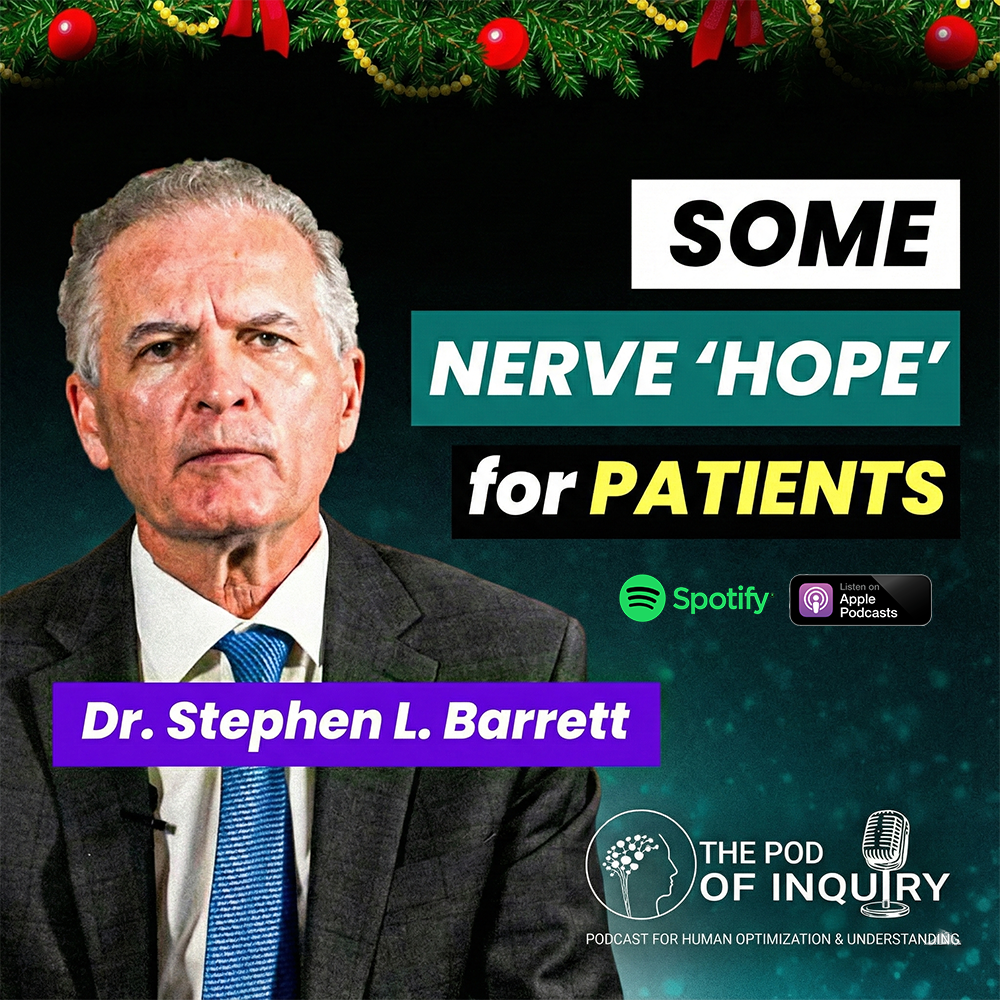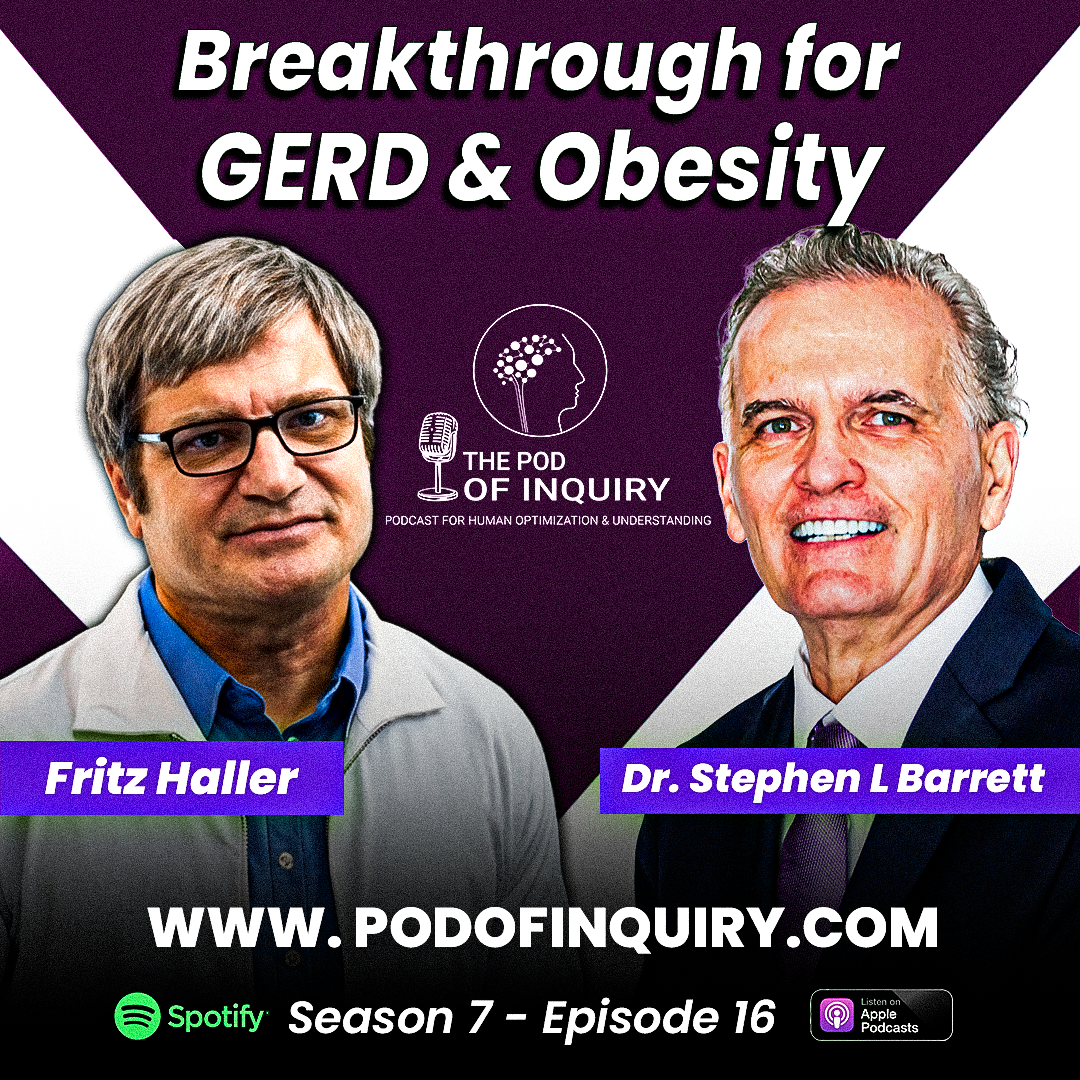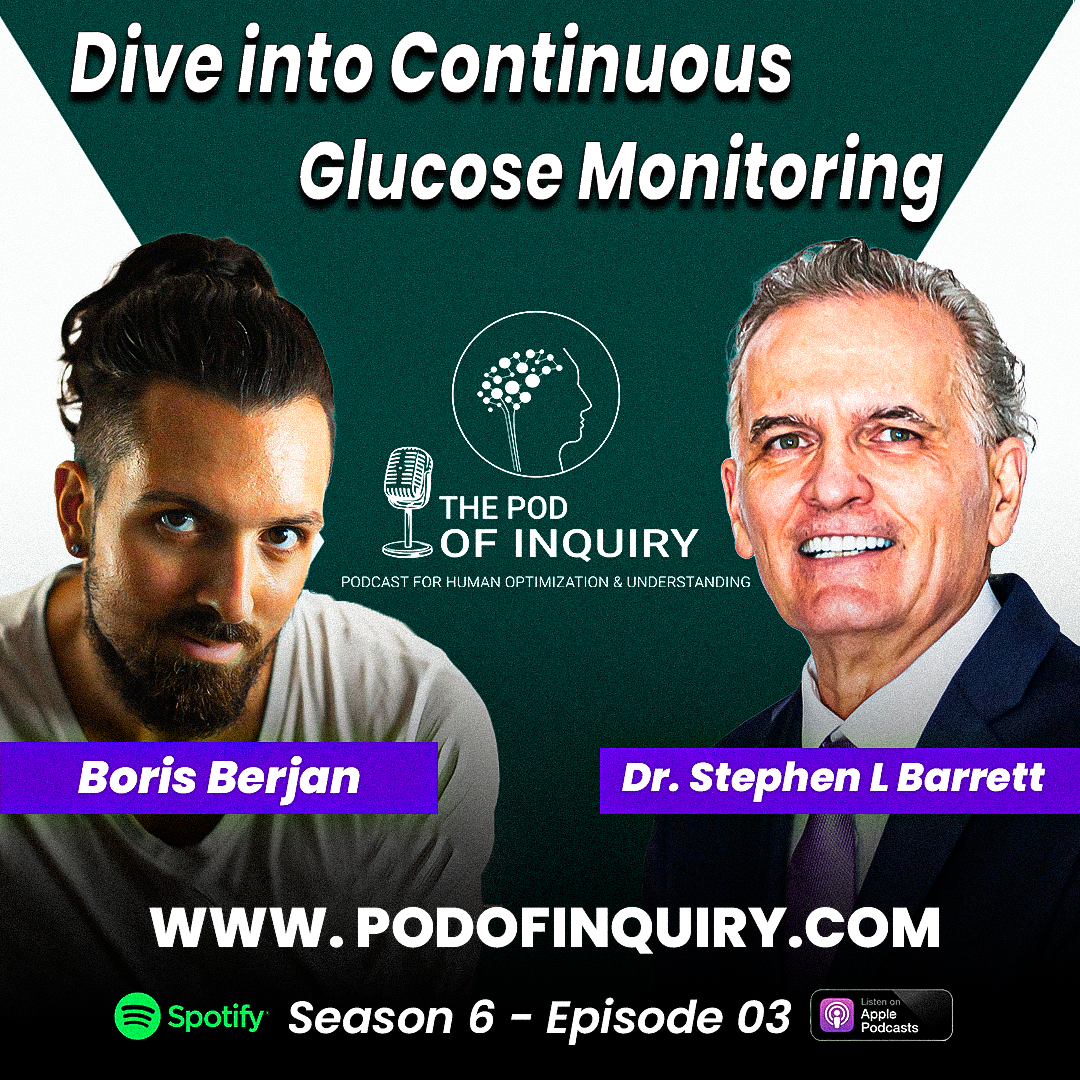Show Notes
Dr. Nickerson’s story and how he got to this place.
- Scott Nickerson went to medical school in Baltimore at Johns Hopkins.
- He had surgical and orthopedic training at the University of Cincinnati
- He was in practice for about 20 years in Sheridan, Wyoming.
- He had to retire after 20 years of practice because of diabetes that had shown up
- He began to have clumsiness of the hand, some pain in the feet, numbness, and tingling that interfered with his capabilities.
- At 2003, he saw an article about Professor Lee Dellon and his ideas about how surgery could be helpful in diabetic peripheral neuropathy.
- He thought surgery for neuropathy is the craziest idea he’s ever heard of; this is a metabolic problem.
- The article was saying one of the secondary effects of metabolic neuropathy and diabetes was that nerves became trapped or pinched.
- Relieving compression on the nerves could resolve many of the symptoms of the neuropathy
- At that point, he started getting involved in research with Dr. Darwin, independently, and with other podiatrists and orthopedists.
- He has been publishing and researching about the products of the peripheral neuropathy and its decompression; it has consumed much of his last 20 years.
There is a reluctance of acceptance of this surgery.
- Barrett says one of the push backs that they’ve had over the last 20 years is that people were saying they’re operating on diabetic peripheral neuropathy
- They were addressing superimposed nerve compressions that happen in patients with diabetic conditions or metabolic disease; it sets up their nerves to become more swollen.
“People who don’t see these nerves surgically don’t understand that it’s that secondary change in size that is induced by the metabolic problem is what the difficulty is.” –Dr. Nickerson
- Most neurologists don’t ever get a chance to see this.
- A couple of neurologists in Italy, Rhoda, and Murali say this secondary enlargement of nerve and consequent entrapment is really the characteristic of diabetic peripheral neuropathy.
- You can read textbooks about all of the different metabolic pathways of diabetes and peripheral neuropathy; it boils down empirical things like having a swollen nerve and a tight tunnel.
- A carpal tunnel decompression is standard.
- It’s no different than the lower extremity; it’s just a little bit of a paradigm shift.
“We’ve been told and are still being told today that once you have diabetic neuropathy, it’s irreversible, and there’s nothing that can be done. That’s not true.” –Dr. Stephen Barrett
- The diagnostic ultrasound studies sonography has shown that in patients with diabetes, there’s about a 25% increase in the cross sectional area.
- In patients with severe or painful diabetic peripheral neuropathy goes up to 50%.
- One of the problems with people being hesitant about nerve decompression for diabetic pain and complications in the foot is that hardly anybody understands that there are compressions there.
- The only one that a few people recognize and know about is the tarsal tunnel syndrome, which is quite similar to the carpal tunnel syndrome in the hand.
- There are at least four or five places below the knee where you have potential for entrapment and can be relieved by simple surgery.
- Every three or four years, we’ll get another known site of entrapment.
- Common fibular nerve or common perineal nerve with the fibula neck.
- The tarsal tunnel components
- The deep peroneal nerve on the top of the foot
- Superficial perineal nerve from the lateral compartment into the subcutaneous space
- A few more actually out in the foot, small ones like medial calcaneal nerve.
- There’s a lot more scientific of compression than what was thought when they first started to get into this.
Nerve entrapment in the lower extremity.
- The first marker of their metabolic disease or diabetes was often the peripheral neuropathy signs and symptoms
- Anytime the heel pain, numbness, or tingling would show up in the feet, check for diabetes.
- The stocking and glove distribution is mythical and dogma
- There can be early on an asymmetry between right and left legs
- There can also be a difference in the sensory areas between peroneal nerve, sural nerve, and tibial nerves; it was published by Andy Rader.
- That can be explained by a relative lesser or greater compression on these individual nerves that in combination produce something that cover most of the foot and leg as a stocking would.
- It’s not predictable; it’s incomplete.
- Barrett thinks there are different vectors that are going on, particularly in the tarsal tunnel.
- If they have Pes Planus deformity, that’s going to cause a more of a pressure inside the tunnels.
- When you look at some of the nerve entrapments in the lower extremity, there are explanations why some would be more early onset or more severe than the other one.
“It’s not like somebody’s just lighting a candle or lighting a cigarette, and everything’s going up at one time.” –Dr. Stephen Barrett
Sorbitol and nerve compression in animals.
- Dellon had a diabetic primate which unfortunately died.
- They took some specimens from the nerve in the mid arm and one at the cubital tunnel.
In the midarm:
- There was no sign of entrapment; it had swelling, just like what Jacobson showed back in 1978.
- The myelin was still relatively in good shape
- The contiguity of the nerve was still relatively normal.
At two inches south to where the cubital tunnel was:
- It was like a bomb had gone off in this nerve.
- There was no way this was solely a metabolic process
- That change at the sites of compression has been demonstrated again in rats; it has been shown to resolve to a significant degree.
- Within six to 12 weeks after decompression, you can see much improvement.
- We now have objective sonographic evidence of nerve swelling in patients with diabetes.
- We have demonstrative changes in animal specimens with models of compression.
- We also have significant inter operative electrical findings.
The Process of Sorbitol.
- There’s a normal pathway in which glucose gets turned into energy.
- When you have high continuing glucose levels, that hexokinase pathway for providing energy is overwhelmed
- Excess glucose is metabolized in an aldose reductase pathway, which leads to an accumulation intraneurally of a sugar alcohol named Sorbitol.
- Sorbitol within the nerve yields a hyperosmolar situation
- Fluid migrates within the nerve across the epineurium so that the size of the nerve increases; that’s what yields the compression and entrapments
- Relieving the entrapment by opening the tissues around the nerve is what gives you the relief; that’s what the nerve decompression is.
Study by Dellon and MacKinnon.
It was established in the 1985 Muscle and Nerve study with Dellon and MacKinnon [LINK]
- They took models of primate nerves, put a silicone tube around the nerve
- The inner diameter was nearly a little bit bigger than the external diameter
- They would make these animals diabetic by giving them Streptozotocin and knock out their pancreas
- They became pretty sick, high 400 blood sugars, cataracts, etc.
- They developed a model of compression
- They showed these histological findings that we’ve discussed
- They would decompress, take the silicone off, and this nerve would regenerate
- Barrett was shocked because we’re taught that diabetes is irreversible.
- Diabetic patients don’t have any reparative mechanisms for nerve regeneration peripherally
The importance of having a neurosurgeon in your practice. [23:56]
- Much of this work was done in both mice and rats
- If you want to look at histology and search authors such as Hu, Tu, and Dellon, you’ll come up with two or three papers that have excellent results [LINK]
- They show the disease and the complications develop and then being reversed by removal of the compression
- The neurologist was shocked because he is getting a baseline reading
- Two minutes later, we take the first site of entrapment off that nerve
- The reading has gone from 200 to 1200
- There’s no placebo there; the patient’s asleep.
- That’s pretty compelling evidence.
- One of the studies by Trignano, et.al. used people who had early arteriosclerotic cardiovascular disease to the point of having potential loss of skin tissue [LINK]
- This was measured on the top of the foot by Transcutaneous partial pressure of oxygen (TcPO2) measurements
- They had 20 people who had bilateral loss of tcPO2 to the point of being ischemic and at risk of skin loss.
- They did nerve decompression on all of these people
- 39 out of the 40 recovered their tcPO2 out of ischemic levels and into more normal levels.
- In addition, six of those people had a foot ulcer at the time of those surgeries; all of those ulcers healed
- None of them recurred in the following year and a half
- You would have expected somewhere between 35 and 50% of those ulcers to recur
- When Dr. Barrett was in practice down in The Woodlands, Texas
- They had a very good Wound Care Center that had hyperbaric
- He sent the director up about six patients
- The director did Laser doppler flowmetry (LDF) on the patients
- Their blood flow dramatically improved their response to thermal stimulus
Nerve decompression and neural control of circulation. [29:58]
- This surgery does not only restore sensation
- Patients with really poor xerotic skin has bad autonomic function and aren’t going to heal very well
- A more superior decompression, like common peroneal or superficial peroneal, changes the vascularity of that foot
- We can then go on subsequently down the line and actually do the tarsal tunnel decompression, or any other decompressions needed in the foot.
- A study from Japan; lead author is Uemura [LINK]
- They were using a technology called SPY; a vascular injection of indocyanin green dye.
- They found in the first minutes after nerve decompression, the vascular flow at the tarsal tunnel where the decompression was done increased by 30%.
- It was a small number of patients.
- It was another demonstration that you really doing something for the neural control of circulation distally to those sites of decompression.
- A study by Jim Anderson showing improvement in EMG intraoperative findings [LINK]
- Anderson was interested what happened in nerve decompressions in terms of the neurophysiology with electrical activity of the nerves and the muscles.
- They measured it with the nerve integrity monitoring machine [NIM]; it could measure the motor evoked potential of a muscle that was being stimulated after decompression.
- In this case, they were measuring the motor evoked potential in the tibialis anterior and peroneal muscles of the lower leg after the nerve decompression was done on common peroneal nerve just below the knee.
- In those cases, about 75% of people had a really significant increase in the motor evoked potential
- This could be demonstrated intraoperatively, in the period between 60 and 100 seconds after you do the nerve decompression.
- It was an immediate intraoperative improvement in the neurophysiological functioning of the neuromuscular junctions.
- There were also some demonstrations with tarsal tunnel releases and the abductor hallucis and the abductor digiti minimi motor evoked potentials; it reflected the function of the medial and lateral plantar nerves
- Some of these were 400-500% increases in just 60 or 90 seconds.
- One observation Dr. Barrett had when decompressing a nerve is that the motor function is the first thing to return for a patient.
- There is a high correlation with patients who post-operatively have immediate complete tibialis anterior or extensor hallucis longus function, their sensation is going to improve and there’s going to be a significant restoration.
- Barrett says they do much better with pain relief than with restoration of sensation.
- That comes down to the robustness of the A fiber, the motor fiber, versus the A Beta fiber
- The A Beta fiber might be a little bit more frail or have some more fragility to it; there is not a one to one correlation.
- There’s also some effect on the proprioception in the muscles and tendons that is responsible for some of that recovery of balance and strength.
- Nickerson had find that over the last four or five years, he has had patients with noticeable weakness of ankle control, tibialis anterior, quad, and hip
- Deceleration and control of going downhill is a problem.
- That’s a reflection of the continued metabolic neuronal damage, and not due to the entrapment of axons.
- That is happening distally at those sites have by fibroosseous tunnel entrapment.
- There have been some things published about improvement in balance
- When you’re over 65, your chances of dying are very high from a fall.
- There was one study that said there was no improvement and balance by Mourik out of Denmark or Holland. https://journals.sagepub.com/doi/abs/10.1177/0269215514556298
- The original papers about improved balance noted that unilateral decompression does not give you an improvement in balance; it requires bilateral nerve decompression to get an improvement
- Van Mourik missed that and only did unilateral decompressions
- In Dr. Barrett’s clinical experience, he has had a very good amount of patients that have had improvement in balance.
- Sometimes, it was they were only unilateral; they were just greatly affected in that one extremity and not as much in the other
- I agree it needs to be a bilateral decompression.
- We’ve got improvements in balance, electrophysiological changes, and ultrasonography; some pretty serious evidence.
There is no placebo effect if you lose a toe or develop an ulcer.
- The objective findings are quite impressive
- The subjective are at least semi subjective because we depend that on patient reporting
- If you’re talking about objective outcomes, you’re talking about things like:
- Do you have an ulcer or do you not?
- Do you develop an ulcer after having healed one previous ulcer, or do you not develop another ulcer?
- The risk of having another ulcer is about 40% per year, according to the New England Journal of Medicine article in 2017; David Armstrong was one of the authors there.
- That includes both neuropathic diabetic foot ulcers and the double whammy of neuro-ischemic diabetic foot ulcers.
- They still don’t quite know what the neuropathic ulcers do
- Dellon’s operation so far has been directed only at the neuropathic problem.
- Trignano’s paper says that there is some benefit even though a neuroischemic situation might be milder than the serious limb threatening ischemia.
“I’m very anxious to get people researching about doing a combination of recirculation, reestablishment of circulation, and decompression of nerves.” –Dr. Nickerson
- As a combination for a research study so that we can see this benefit extended to a much larger group of people with the cascade of diabetic neuropathy complications.
- A pressure induced vasodilation phenomenon that is present normally, but is absent in diabetes and worse in diabetic neuropathy.
- We don’t have any information on whether that can be reversed with nerve decompression in diabetes
- We do know that in a similar situation that transferred flaps, which have nerve supply and better circulation, survive much better than non-innervated flaps.
“Better innervation is an important part of restoring that pressure induced vasodilation.” –Dr. Nickerson
- Now that phenomenon is something that increases the blood flow to the skin with gradual increasing pressures
- If you were standing on your feet, and in comparison to lying, or sitting with insignificant pressure on your feet, the blood supply can be increased by approximately 45%.
- That may be the whole explanation of why nerve decompression is so effective in healing the initial diabetic foot ulcers and in preventing a recurrence of the foot ulcer.
There’s always been a debate about what’s happening with the small fiber.
- When we first started doing epidermal nerve fiber density biopsies, we didn’t really see any changes, post decompression 3-6 months postoperatively.
- These patients after a year postop get another epidermal nerve fiber density biopsy and they had reestablished completely normal ENFD counts
- It’s certainly an interesting thing to look down into.
“One of the things that we should keep in mind is that if you repair a nerve, the regrowth of innovation past that repair site, which is what nerve decompression would be, would be equivalent to a repair site.” –Dr. Nickerson
- That only occurs at a rate of one inch per month and probably slower than that in the adults with diabetes.
- If you’re talking about relief of burning at the toes, you would expect it to take at least four to six months before you start to see that regeneration of the small fibers getting out there to the toes.
What’s going to take to get nerve decompression into mainstream medicine?
- Some of these people are hopeless
- They’ve had so much pain for such a long period of time
- They’ve had so much pain and ulceration that they’ve been in
- They spend in wound care clinics way too much time.
- About 10% of our nerve patients are suicidal.
- There’s a tremendous amount of utility for this technology.
- Lee introduced this in the early 1980s; we’ve been talking about it, educating people, training surgeons
- People will come to you after surgery and tell you that you saved their lives because they were suicidal from the degree of pain.
- Yamasaki and Dr. Nickerson have been working on a comparison of the benefits of nerve decompression and preventing initial alteration, and reoccurred alterations in the diabetic with peripheral neuropathy, in comparison to standard of care.
- Nickerson had an opportunity to refresh his memory on that whole panoply of information.
- It’s probably much more than most of our audience will have been aware of, and that’s a good place to start.
To find out more about this information:
- The Association of Extremity and Nerve Surgeons: LINK
- If folks would like to correspond with Dr. Nickerson: thenix@fiberpipe.net




